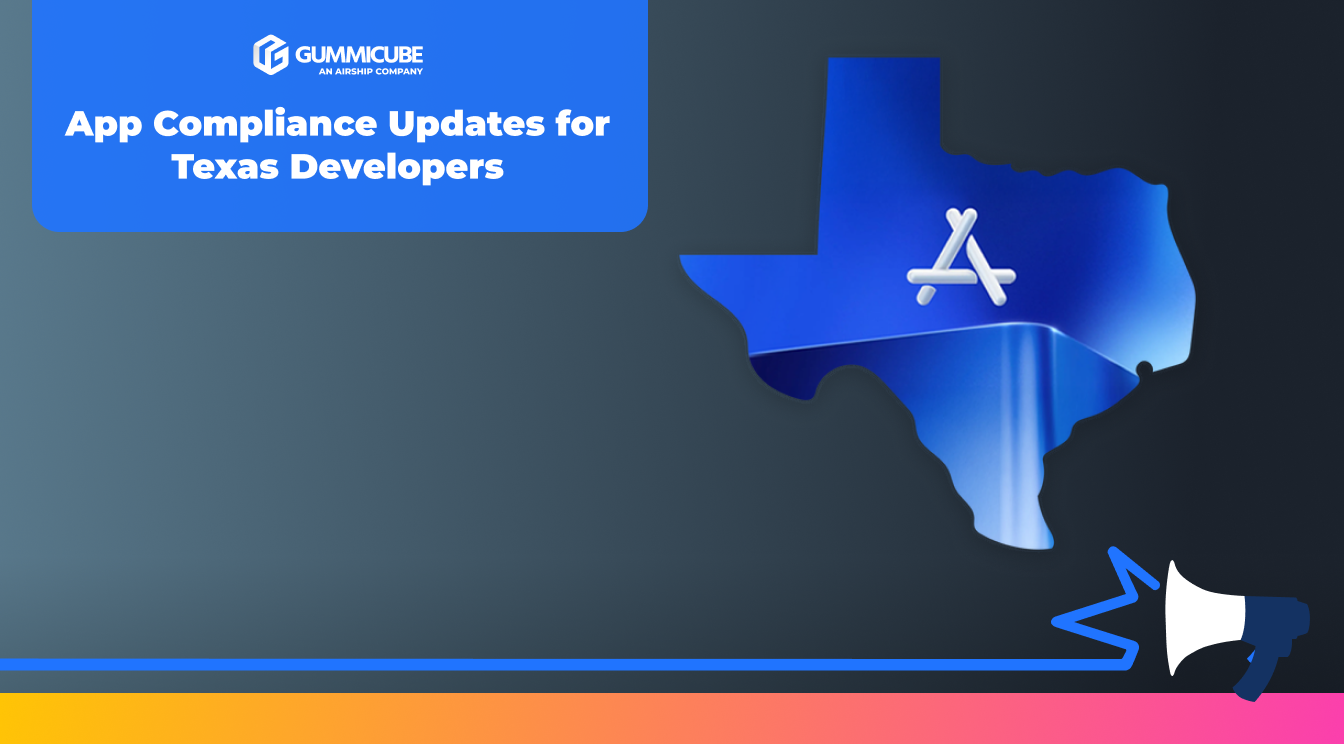
The Role of App Store Guidelines in Your App's Success
Posted on November 7th, 2025
A well-optimized app must also align with app review guidelines within the app stores to remain compliant, visible, and successful. Read more below.

On November 4, Apple released a detailed update outlining new tools and guidance designed to help developers prepare for upcoming state-level requirements for Texas developers in the United States. These requirements are driven in part by legislation such as SB2420. Apple explained that certain provisions within these laws could lead to unintended consequences for users if not approached carefully. Apple noted that developers may be placed in a position where they are required to collect sensitive personal information simply to allow a user to download an app. Apple expressed concern that this could weaken the privacy protections the App Store has maintained for years.
Beginning January 1, 2026, new Apple Accounts created in Texas will be subject to a series of new compliance requirements. These include age assurance processes and parent or guardian consent for individuals under the age of eighteen. The rules will apply to app downloads, purchases, and any changes that Apple classifies as significant within an app or its related account. The framework also grants parents the ability to revoke consent for any app they previously approved for their child or teen.
Apple is preparing developers by releasing documentation, APIs, and testing environments to support compliance. These resources are designed to enable developers to incorporate the necessary user flows, notification capabilities, and verifications into their applications prior to the 2026 rollout. Apple has made it clear that the proactive adoption of these new capabilities is crucial for avoiding service disruptions and ensuring that apps remain accessible within the Texas market.
From an App Store Optimization (ASO) standpoint, these updates do more than shape technical requirements. They also influence how developers should approach app category positioning, metadata clarity, audience targeting, and the overall presentation of their app to prospective users. Developers who target minors or who operate apps that attract younger audiences will need a careful and strategic approach to creative assets and metadata. Aligning with compliance expectations while continuing to invest in ASO-driven iteration will be essential.
Apple’s communication outlined a series of new obligations that apply to new Apple Accounts created in Texas beginning January 1, 2026. These requirements focus on age verification and consent. Although these requirements sit primarily at the account level, they influence the way apps must interact with the system through new APIs.
The new App Store mandates may include the following duties:
• Verification of the age category of the user. • Parent or guardian consent for minors under eighteen for app downloads and in-app purchases. • Parent or guardian consent for any significant change associated with an app or service. • The ability for parents to revoke previously granted consent.
Developers who operate apps that attract users across age ranges will need to rely on Apple’s declared age range API and the significant change API. These APIs provide deterministic signals that inform apps of the user’s age category, as provided by the system, and whether a significant change triggers the need for new consent.
It is essential to note that Apple is developing a notification workflow for instances where a parent withdraws consent. Developers will be able to configure their app to receive these alerts, allowing them to act immediately. This includes altering access, restricting features, or informing the user of the change in approval status. Without these capabilities, developers may find themselves out of compliance with state-level regulations that require swift and accurate enforcement of parental decisions.
These updates add a new dimension to App Store Optimization. The creative presence and metadata of an app must align with the intended age range declared by the developer. Content that appears misleading, ambiguous, or suggestive of a different audience could create inconsistencies between the app’s presentation and its compliance obligations. To address this, developers will need to structure their ASO iterations with clarity, precision, and attention to audience signals.
Apple announced that sandbox testing is already available to support developers who want to prepare for Texas compliance requirements in advance. Sandbox testing is available specifically for the declared age range API and the significant change API. These APIs are accessible in the beta versions of iOS 26.2 and iPadOS 26.2.
The declared age range API enables developers to retrieve age category information for a user based on the classifications Apple determines. This enables apps to tailor their experience for minors, teens, or adults. It also allows developers to surface consent flows when required.
The significant change API enables developers to flag specific app events that Apple classifies as significant. A significant change can include shifting to a new business model, modifying how user data is collected, or altering the fundamental nature of an app’s content. These changes may require new consent from a parent or guardian for minors. By using this API, developers can trigger the appropriate prompts and maintain compliance.
The ability to configure notification settings for revoked consent adds another layer of responsibility. If a parent rescinds access for a child or teen, developers must respond by preventing continued usage or adjusting access to restricted features. Failure to do so could result in noncompliance within the state and affect user trust.
From an ASO perspective, this technical groundwork impacts the creative strategy for developers producing family-focused content. App previews, screenshots, and descriptions that are clearly aligned with the intended user range will help users and parents understand the nature of the app. Inconsistencies between content and audience targeting can create design challenges once these APIs are active at scale.
While these compliance updates originate from a legal and technical standpoint, they have direct implications for App Store Optimization strategies. Developers who target children, teens, or family-based audiences will need to pay close attention to how they frame their app within the App Store listing. Clarity around purpose, age appropriateness, and feature sets is no longer optional. It ties directly into compliance with Texas law.
Apps that cater to younger users often rely on engaging creative elements, playful vocabulary, bold visual cues, and brightly colored screenshot sequences. All of these elements remain important from an ASO perspective. However, they must now also reinforce the intended age category to avoid misunderstandings. If the app targets young children, the creative assets should reflect that without ambiguity. If the app targets teens, the tone, vocabulary, and visuals should match that category.
A/B testing becomes especially important under these new rules. Changes to a listing should be evaluated carefully across multiple audiences to ensure that the creative assets are effective while maintaining compliance. Developers may need to test new titles, subtitles, screenshots, or App Store videos that more clearly signal the target age range. These changes help ensure that the listing aligns with the age category information Apple will make available through the new APIs.
Metadata will carry additional importance. App keywords and descriptions should reinforce the app's core purpose and its suitability for the intended age group. Developers should consider the clarity of their value proposition and ensure it does not inadvertently target users outside the intended age range. This is essential for both compliance and search visibility.
The alignment between ASO strategy and compliance will become more visible as these regulations approach. Apps that appear misaligned may create friction for parents or guardians who must approve downloads for minors. A clear, precise, and compliant listing offers a smoother experience for every stakeholder. Such clarity also supports higher conversion rates because users understand what they are downloading, why the app is relevant to them, and how it functions within the broader ecosystem.
Iteration remains a foundational practice in App Store Optimization. Developers who consistently test new creative assets and metadata tend to see higher conversion rates, improved category relevance, and better long-term ranking stability. Under the upcoming Texas compliance framework, iteration serves another purpose. It ensures that listings remain compliant as laws, guidelines, and App Store requirements evolve.
Every element of an app listing should be evaluated within this context. This includes the title, subtitle, description, screenshots, app store videos, and screenshots. Changes to any of these elements should be done strategically and tested to determine their impact on engagement and compliance alignment.
For app developers who operate child-focused apps, iteration may include testing different visual styles that better reflect age appropriateness. It may also involve reworking descriptions to deliver clearer and more concise information for parents who will be responsible for granting consent.
A/B testing will help determine whether certain messaging resonates more strongly with parents or guardians compared to minors. Developers should test variations that clarify educational benefits, safety features, or parental controls if applicable. This type of testing can strengthen trust and provide transparency, which is especially valuable when parental approval is required.
Regular iteration ensures that listings remain fresh and competitive. It also ensures that developers can respond quickly to any changes in Apple’s guidance or state regulations. Developers who maintain an active optimization workflow are better positioned to remain compliant while also positioning their app for optimal visibility and successful performance.
Apple’s November 4th announcement signals a significant shift in how developers will interact with age assurance frameworks within the App Store. The new requirements for Texas Apple Accounts underscore the importance of clear audience targeting, consent management, and age-appropriate user experiences. Although the core obligations relate to technical capabilities and legal compliance, they have a direct influence on the broader strategy for App Store Optimization.
Developers who lean into these updates now can strengthen their listings, improve clarity for users and parents, and maintain long-term alignment with emerging state-level regulations. With thoughtful iteration, strategic A/B testing, and a clear understanding of audience signals, developers can remain both compliant and competitive.
If you want to ensure your app is prepared for new compliance expectations while continuing to grow through effective App Store Optimization, our team is here to support your strategy. Our ASO services can help you evaluate your metadata, refine your creative assets, and build an ongoing optimization approach that keeps your app aligned with evolving requirements.

A well-optimized app must also align with app review guidelines within the app stores to remain compliant, visible, and successful. Read more below.

Amazon's Luna update reflects how major entertainment brands are responding to evolving user behavior. Developers can use this as inspiration for their ASO.

Explore this year's ten winner of the Google Play Store Indie Fund, and learn how ASO and app innovation are intertwined. Read more!